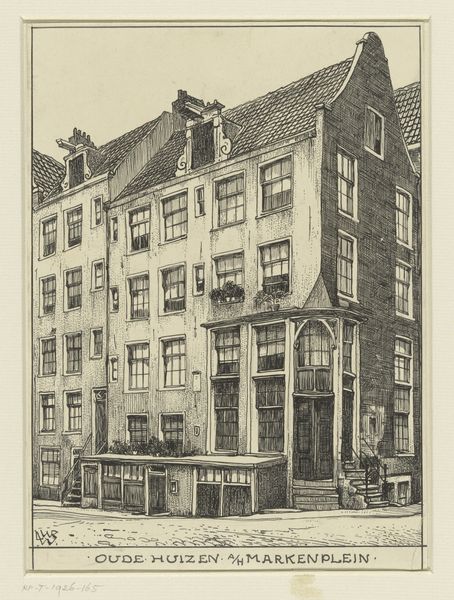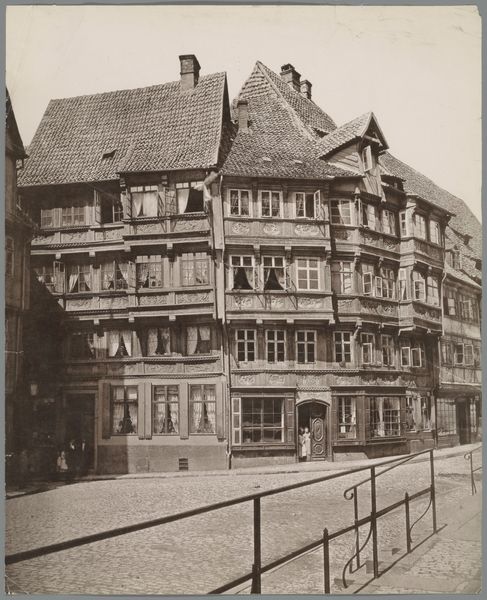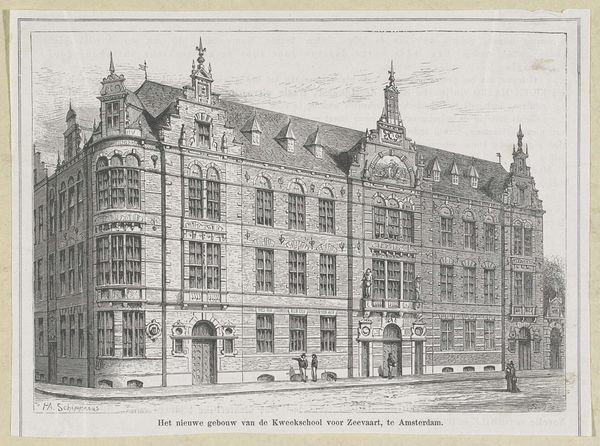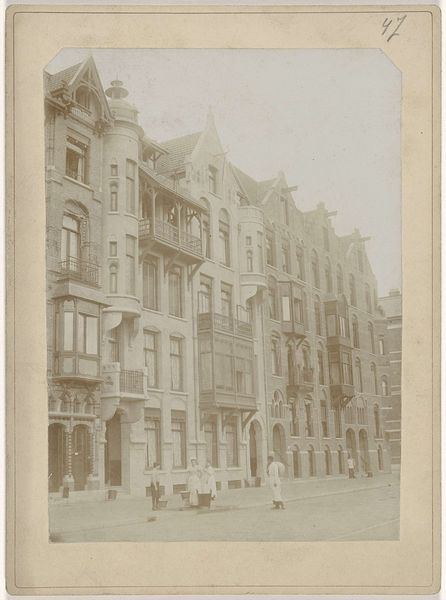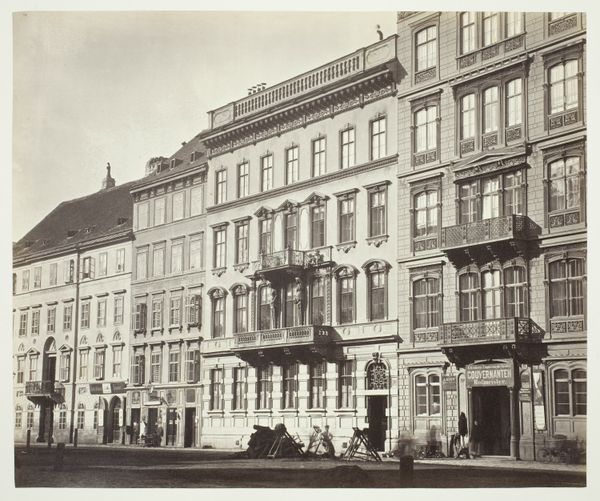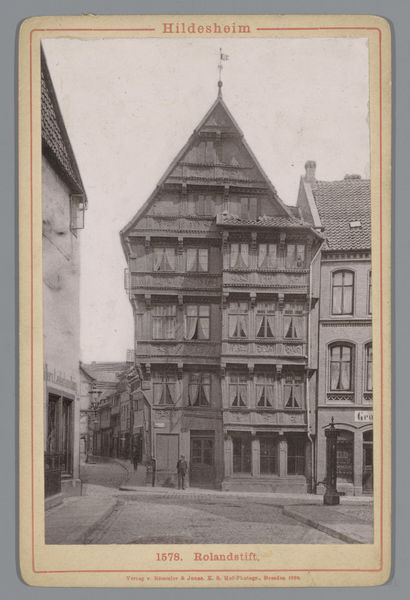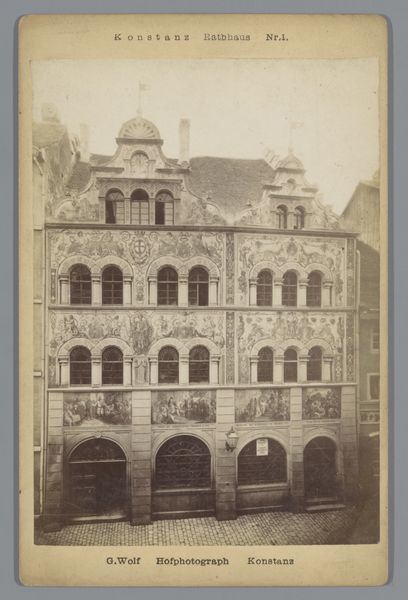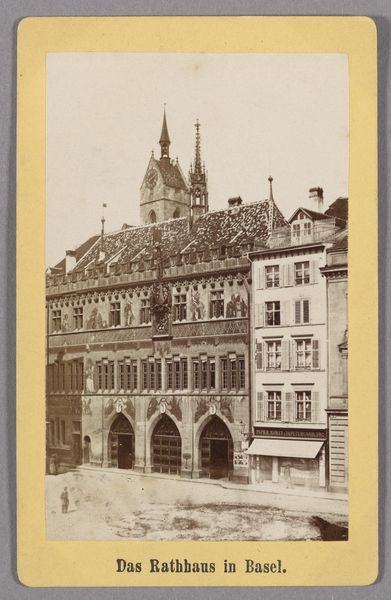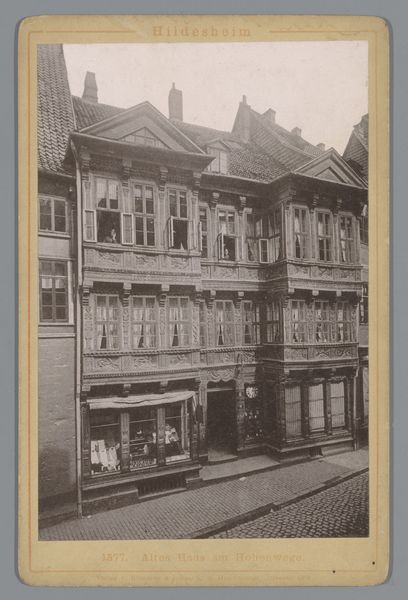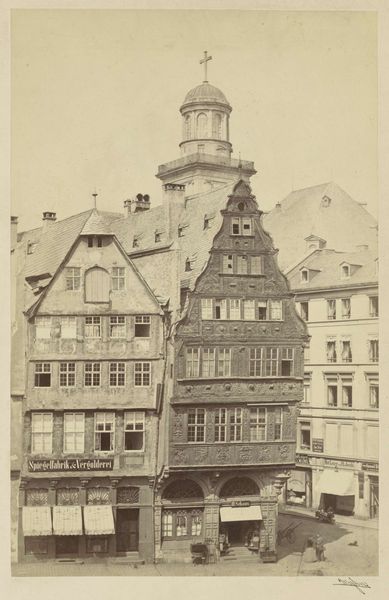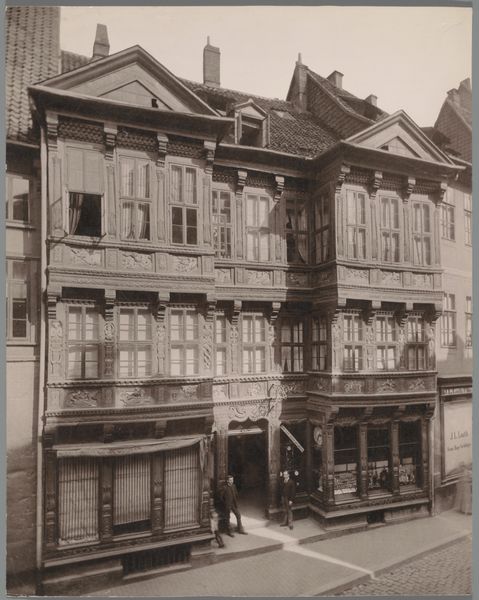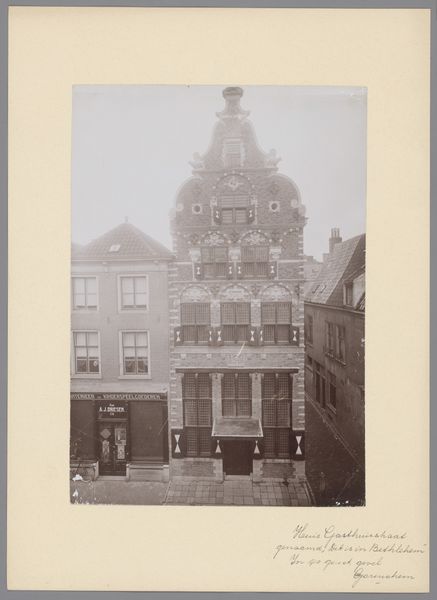
print, bronze, public-art, photography, albumen-print, architecture
#
excavation photography
#
architectural landscape
# print
#
sculpture
#
bronze
#
public-art
#
historic architecture
#
11_renaissance
#
photography
#
ancient-mediterranean
#
cityscape
#
public art photography
#
albumen-print
#
architecture
#
realism
#
statue
#
building
Dimensions: height 177 mm, width 120 mm
Copyright: Rijks Museum: Open Domain
Curator: Oh, this photograph immediately gives me that feeling of being somewhere very specific and very historical... It's somehow very sober. Editor: It certainly does, doesn't it? We're looking at "Sint-Joris Gildehuis in Antwerpen, België," or Saint George's Guildhall in Antwerp, Belgium. The photograph, an albumen print, was created sometime between 1884 and 1914 by Gustave Hermans, and it's now held at the Rijksmuseum. Curator: Gildehuis...guildhall. Right away, my eye's drawn up, past all those windows—how many *are* there?—to that gilded figure on the roof. Saint George himself, slaying a dragon. Is that the symbolism? Editor: Spot on! Saint George is the patron saint of many guilds and cities, representing courage and victory over evil. Guildhalls served as centers for trade, social gatherings, and the protection of craft secrets. And this print itself becomes a symbol – the photograph preserves a particular moment of Antwerpen's urban character for posterity. Curator: A photograph, a "public art photography," as our tags mention. Right, the perfect vehicle to record a time that might be easily overlooked. So what feeling does this Guildhall evoke in others? The photo, like the building, feels so permanent, immutable almost. Does the symmetry mean something too? Is that typical for that time? Editor: The symmetry would underscore the guild's emphasis on order and harmony. Think of the building not just as a structure, but as an embodiment of the values held within. And the realism – there's so little to hide behind. A city trying to immortalize its ideals. You notice how, even in monochrome, the contrasts draw your eye. This is why symbols matter. This guildhall wasn’t only brick and mortar. It was meant to declare the purpose of Antwerpen's ambitions and character. Curator: A declaration indeed. It still speaks pretty well now. So the architecture immortalizes the people… or maybe people immortalize their cities in architecture… Which makes more sense?
Comments
No comments
Be the first to comment and join the conversation on the ultimate creative platform.
